Key Takeaways
- Lumen5 dramatically streamlines article-to-video creation, potentially cutting production time by up to 80% over traditional methods.
- AI-driven features like Storyboarding and “Blueprints” ensure brand consistency and enable scalable video production for social media.
- Successful implementation hinges on strategic planning, including content optimization, clear branding setup, and workflow integration.
- Measuring ROI involves tracking efficiency gains (time/cost savings), audience engagement metrics, and conversion improvements.
Lumen5 is a crucial tool for article-to-social video repurposing, a key strategy for boosting digital engagement in 2025. By leveraging AI video generation, Lumen5 transforms your content strategy, driving social media engagement and delivering remarkable workflow automation. This AI tool dramatically reduces manual effort. This guide provides a step-by-step approach to using Lumen5 effectively, exploring resource planning, common challenges, and methods to measure your return.
Visit the Official Lumen5 WebsiteUnderstanding Lumen5: Core Capabilities for Content Transformation in 2025
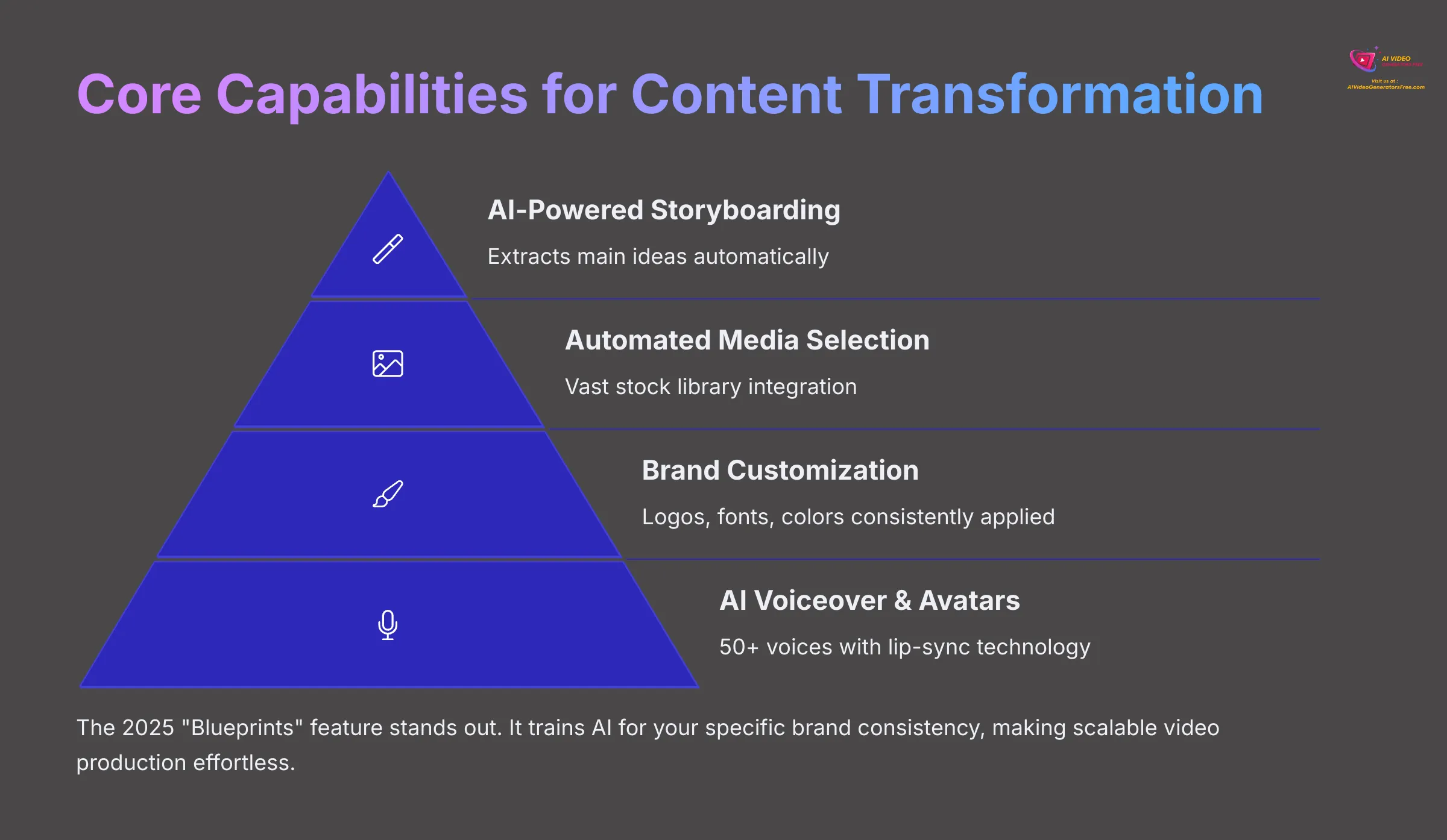

Lumen5 serves as an exceptional tool for converting your written content into compelling videos. Its AI engine functions like a smart assistant that reads your text and extracts the main ideas. It then automatically selects relevant media from its vast stock library. This feature saves considerable time.
You also gain access to excellent branding customization options. This includes adding your logos, specific fonts, and brand colors to maintain consistency. For 2025, Lumen5 offers impressive AI voiceover and AI avatar capabilities. You have over 50 AI voices to choose from, and the avatars feature lip-sync technology. The “Blueprints” feature stands out for 2025. It allows you to train the AI for your specific brand consistency, making scalable video production effortless. It's like providing the AI with a custom-tailored suit for your brand; every video it produces emerges looking sharp and consistently on-brand.
Lumen5 supports various input types. You can use articles, blog posts, direct text, and even PDFs. For output, it provides different aspect ratios perfect for social media, like square for Instagram or vertical for Stories. What's more, Lumen5 operates cloud-based, so you can access it from anywhere. Its core technical capabilities include AI-Powered Storyboarding, Automated Media Selection, an intuitive Drag-and-Drop Editor, and those versatile Multiple Aspect Ratios.
Strategic Implementation Planning: Preparing for Lumen5 Integration
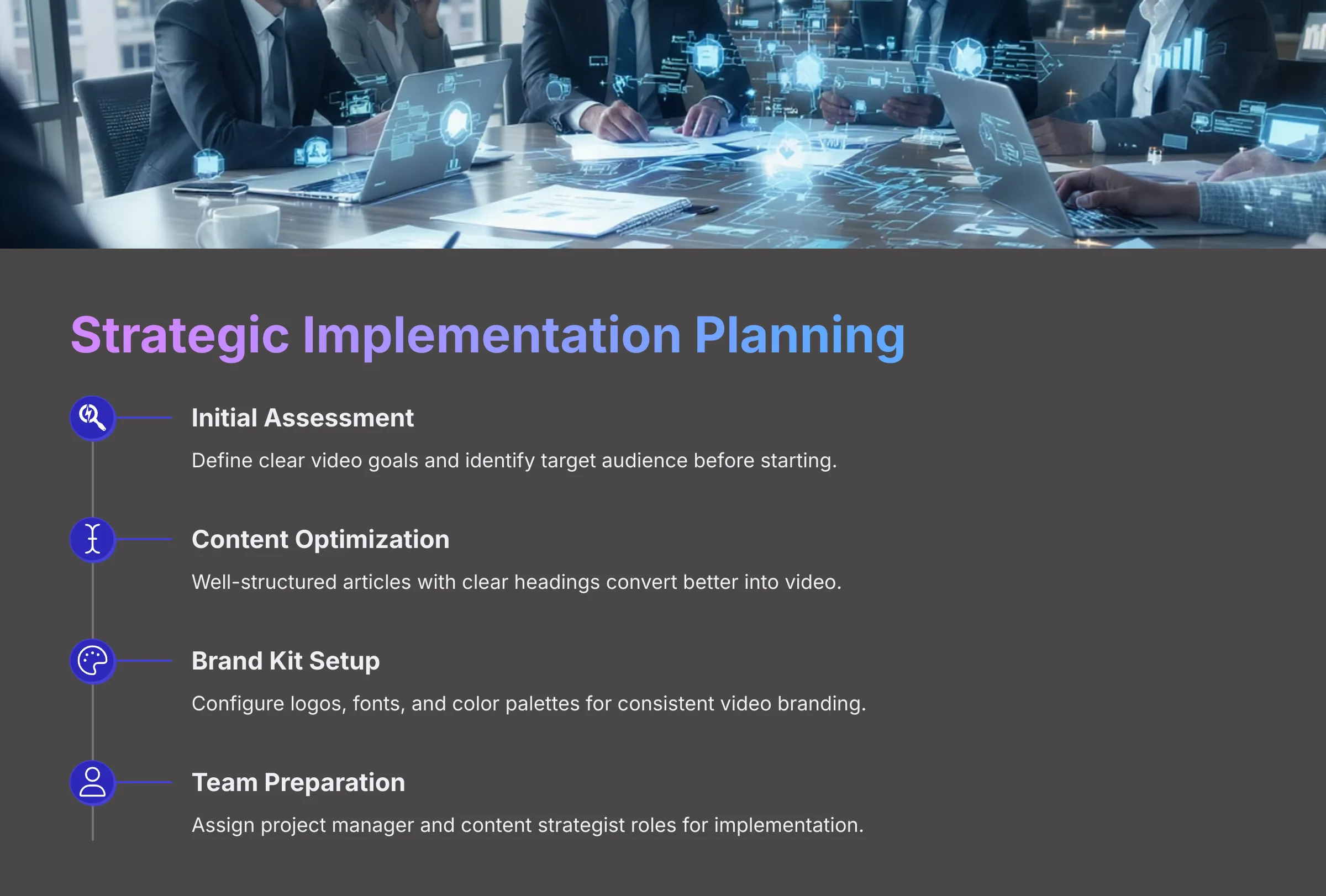

To really maximize Lumen5's potential, a bit of planning makes a significant difference. I always recommend a systematic, phased approach. Think of it as a journey, starting with an initial assessment and progressing towards ongoing optimization. First, you need to define clear video goals. What do you want these videos to achieve? Who represents your target audience? Answering these questions before you start creating proves absolutely fundamental.
Next, identify and optimize your existing source articles. Content that maintains well-structured format with clear headings and concise messages converts much better into video. My team has discovered this step significantly improves the AI's output. Then, you'll set up your Lumen5 account. A crucial part involves configuring the “Brand Kit” with your logos, fonts, and color palettes. This ensures all your videos maintain a consistent look and feel.
Regarding initial team and resource considerations, you'll likely need a project manager and perhaps a content strategist role. The typical phased approach I've seen work well involves: gathering requirements, then familiarizing the team with the tool through a pilot, and finally designing the workflow. Essential resources include your content strategy documents, access to your best-performing articles, a Lumen5 subscription (we'll discuss tiers later), and your brand guidelines. You'll also need a dedicated project lead and a team open to adapting content workflows.
Phase 1: Pre-Implementation Checklist & Goal Setting
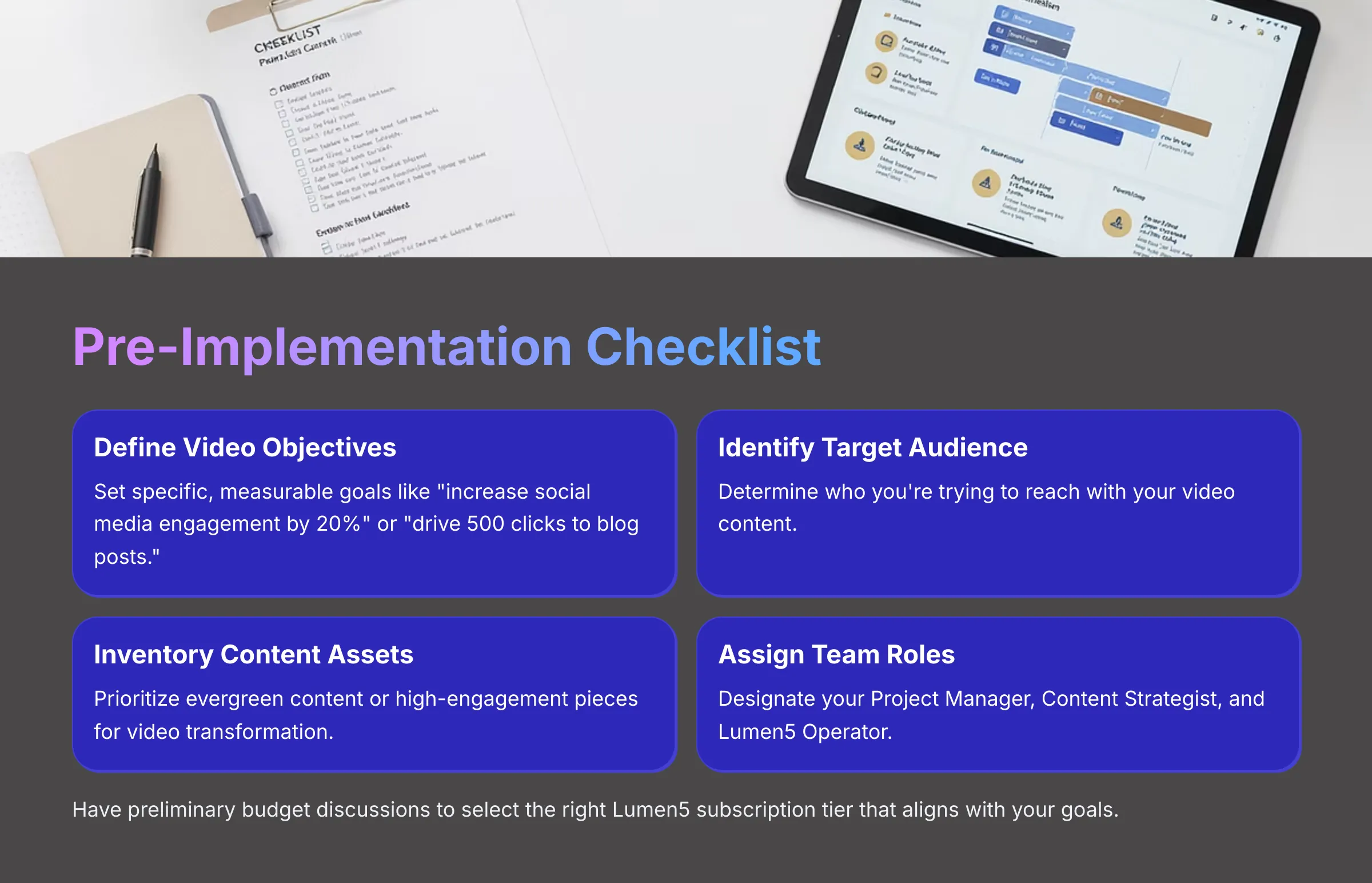

Before diving in, let's prepare your organization properly. I've assembled a checklist based on what I've seen works best:
- Define Video Objectives: What do you want to achieve? For example, “increase social media engagement by 20%” or “drive 500 clicks to our latest blog post series.”
- Identify Target Audience for Video Content: Who are you trying to reach with these videos?
- Inventory Existing Text Content Assets: List your current articles. Prioritize evergreen content or pieces that already demonstrate high engagement.
- Assign Key Team Roles: Decide who will serve as the Project Manager, Content Strategist, and the future Lumen5 Operator.
- Preliminary Budget Discussion for Subscription: Have an initial conversation about the budget for the Lumen5 plan that fits your needs.
Guidance on selecting the right Lumen5 subscription tier proves important. Your preliminary goals will help here. For instance, if your goal involves repurposing your top 10 blog posts to increase social media click-through rates by 15% in the next quarter, certain features in higher tiers might be necessary. We will examine detailed budget considerations later.
Step-by-Step Lumen5 Implementation: From Article to Social Video (The Core Workflow)
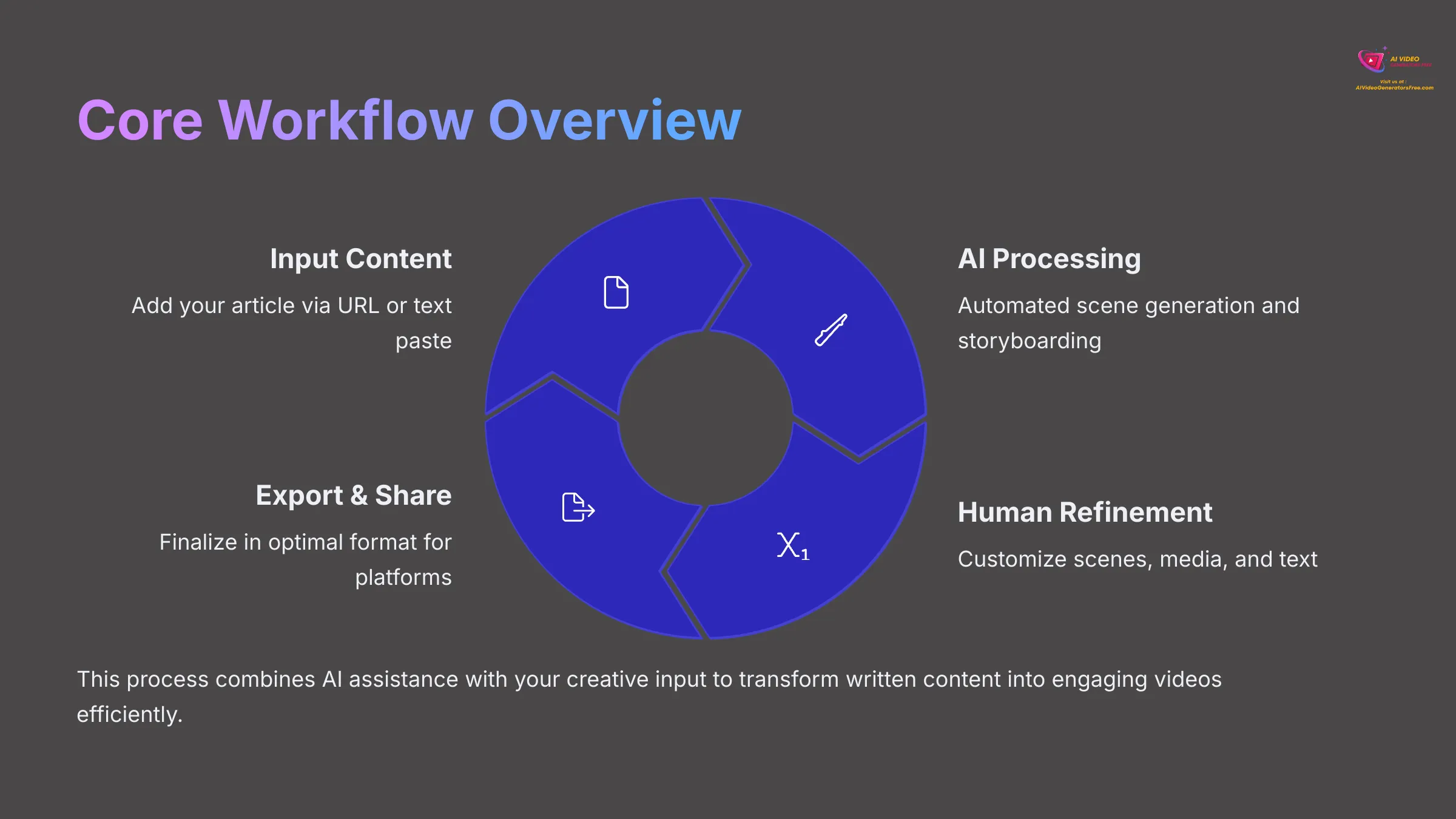

Now, let's walk through the main process of creating a video in Lumen5. This represents where the magic of AI assistance meets your human touch for customization. I'll cover the standard article-to-video repurposing model.
Step 1: Inputting Your Source Article
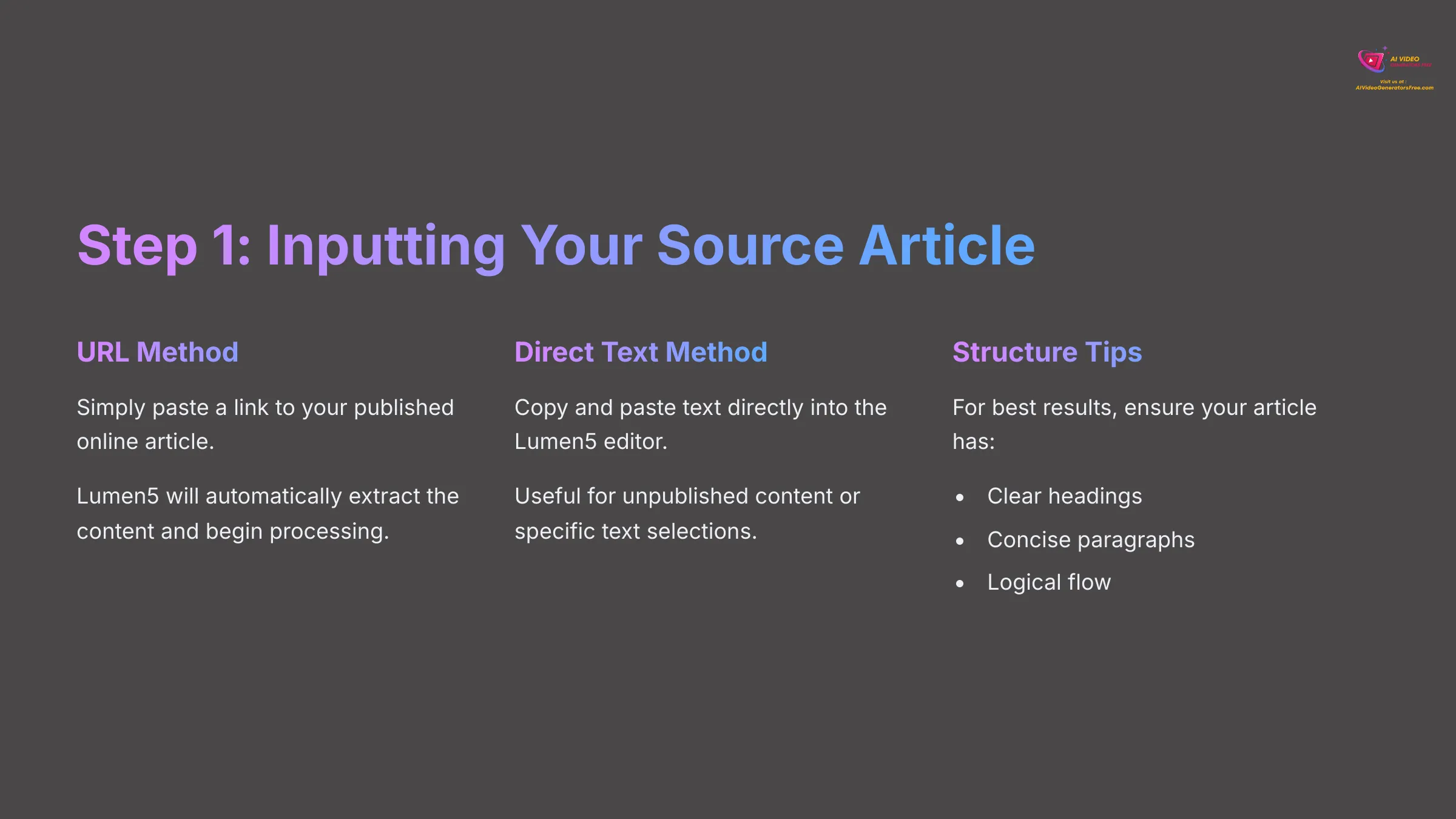

You can input your content in two main ways: by pasting a URL to an online article or by directly pasting the text. A little tip from my experience: ensure your article maintains well-structured format with clear headings and concise paragraphs. This helps Lumen5's AI interpret it more accurately.
Step 2: AI-Powered Storyboarding & Initial Scene Generation
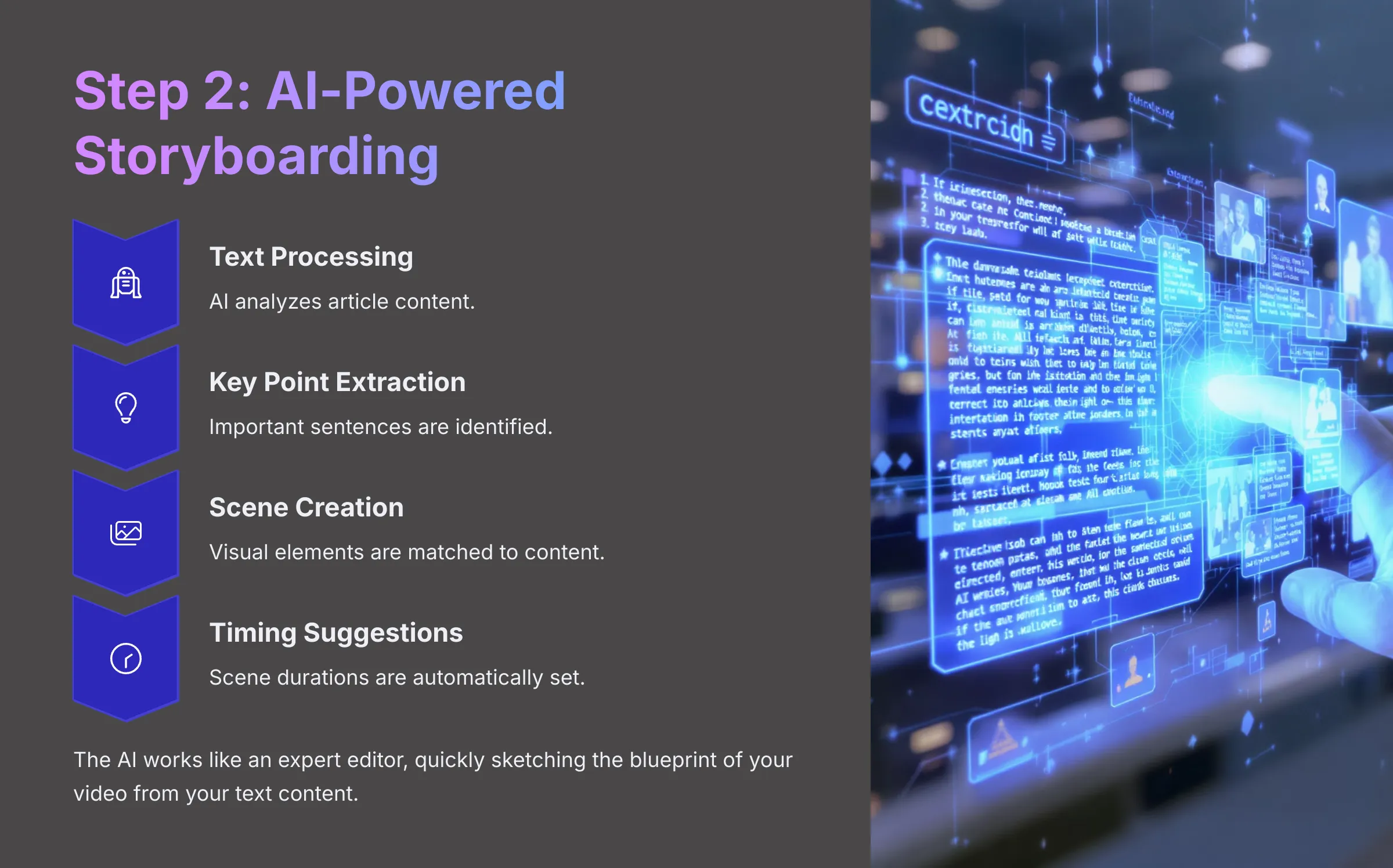

Once you input your article, Lumen5's AI gets to work. It processes the text, extracts key sentences, and creates a draft storyboard. This storyboard essentially represents the sequence of scenes for your video. The AI also suggests initial scene durations and how the text should be positioned on screen. It's like having an expert editor quickly sketching out the blueprint of your video.
Step 3: Customizing Scenes – The Human Touch
This represents where you refine the AI's draft. Lumen5 features a drag-and-drop editor that makes customization easy. You can adjust the on-screen text—maybe you want to summarize a point further or highlight a specific phrase. You can also swap out the AI-selected media with your own images or video clips to make it more relevant, or choose different options from Lumen5's stock library. Modifying the layout and scene timing helps with pacing and emphasis.
Step 4: Enhancing with Audio: Adding Music and AI Voiceovers
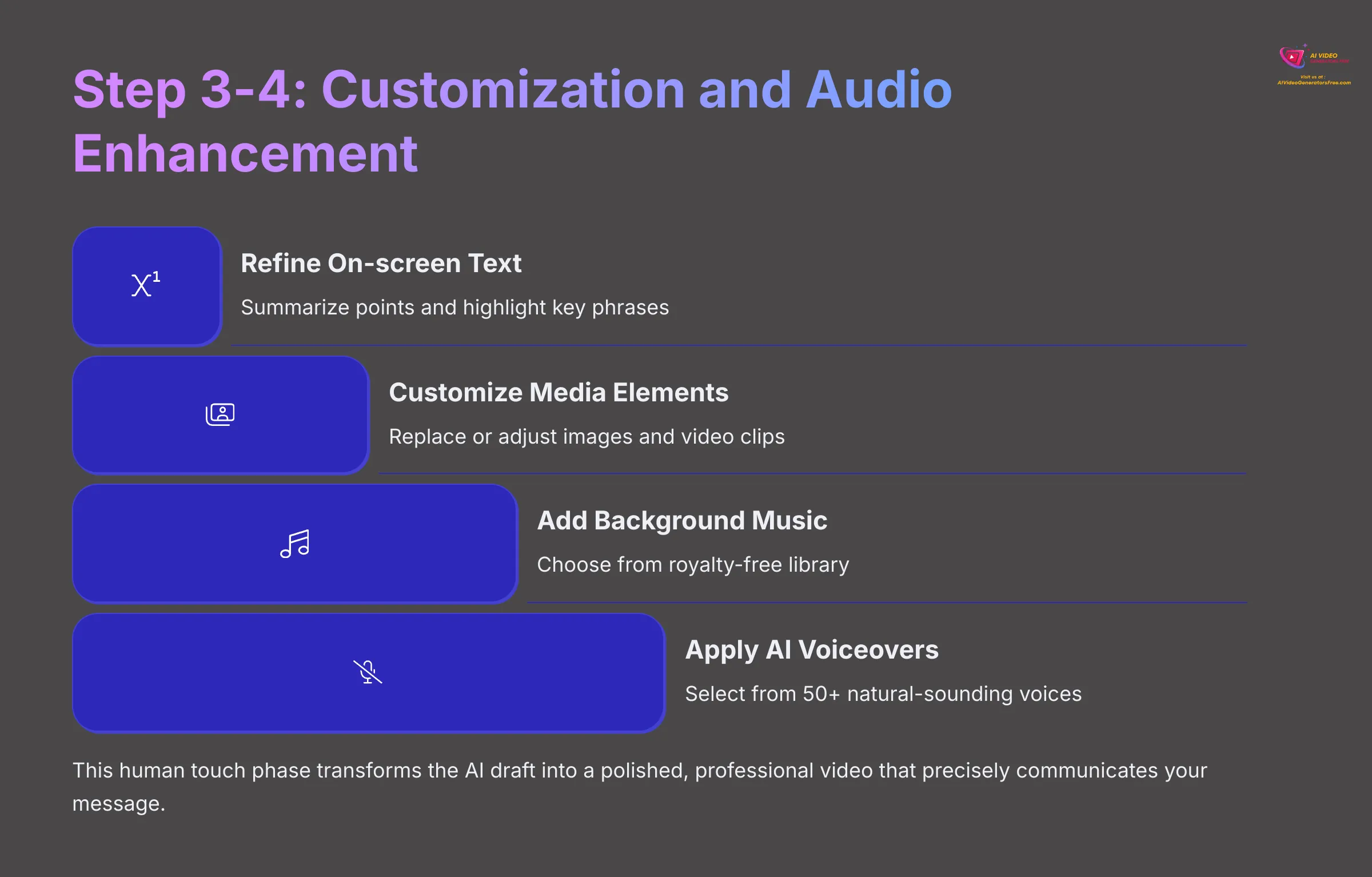

Audio can really bring your video to life. Lumen5 offers a built-in library of royalty-free music. If you prefer, you can upload your own custom audio tracks or voiceovers. I'm particularly impressed with Lumen5's AI Voiceovers. There are over 50 voices available, and they excel at providing clear narration.
Step 5: Applying Branding Elements for Consistency
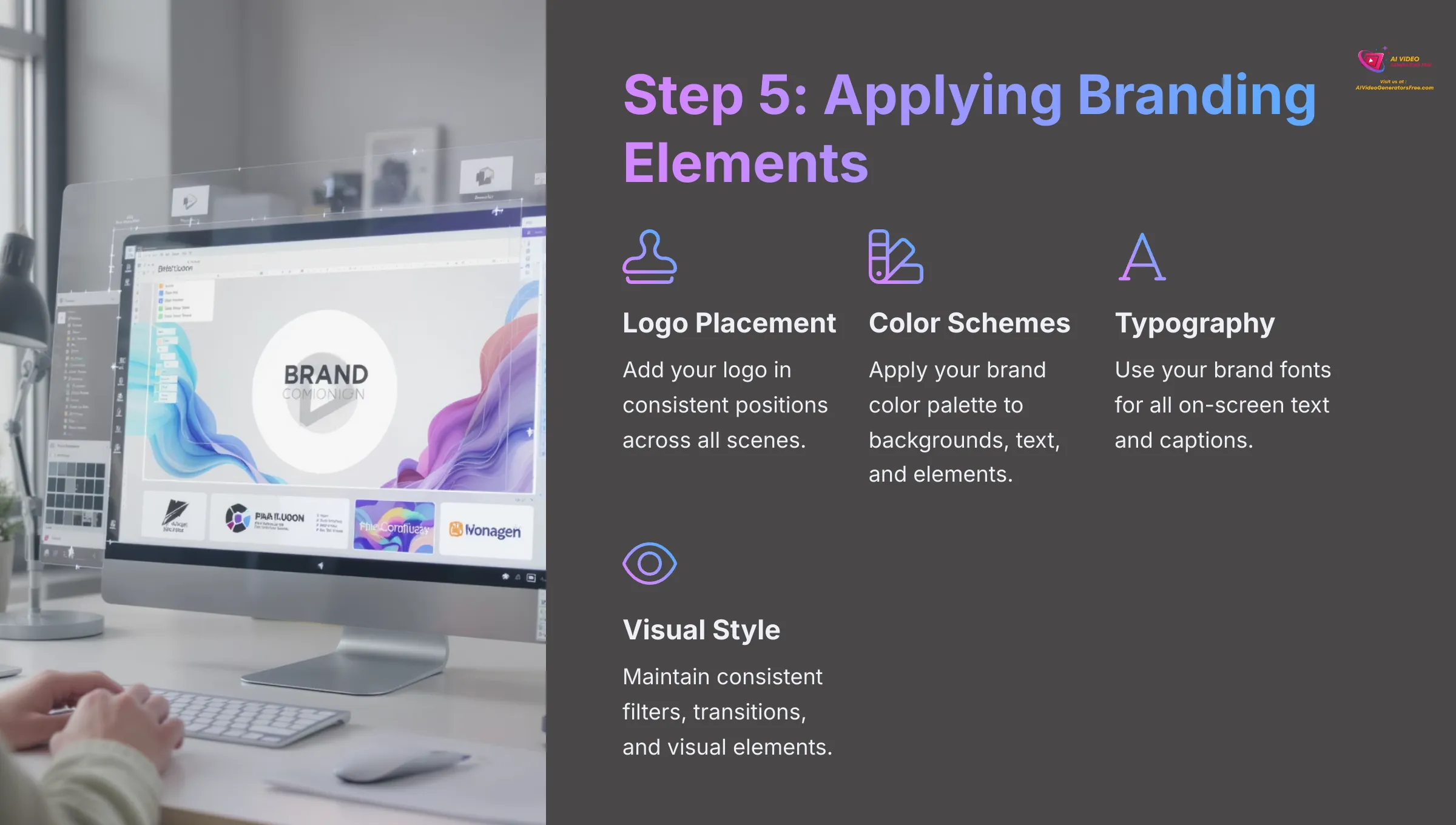

Remember that “Brand Kit” we discussed setting up? This represents where it comes into play. You will apply your logos, brand fonts, and color palettes consistently across all scenes. This ensures every video strongly reflects your brand identity.
Step 6: Utilizing “Blueprints” for Scaled Brand Consistency (2025 Highlight)
The “Blueprints” feature, especially prominent in 2025, serves as a game-changer for scaling. You can train Lumen5's AI (or work with their team for enterprise plans) on your specific brand guidelines. This means the AI learns your preferred visual style, tone, structure, and design elements. Applying these Blueprints automates a huge part of making videos that remain consistently on-brand, which represents a massive time-saver.
Step 7: Previewing, Iterating, and Final Export
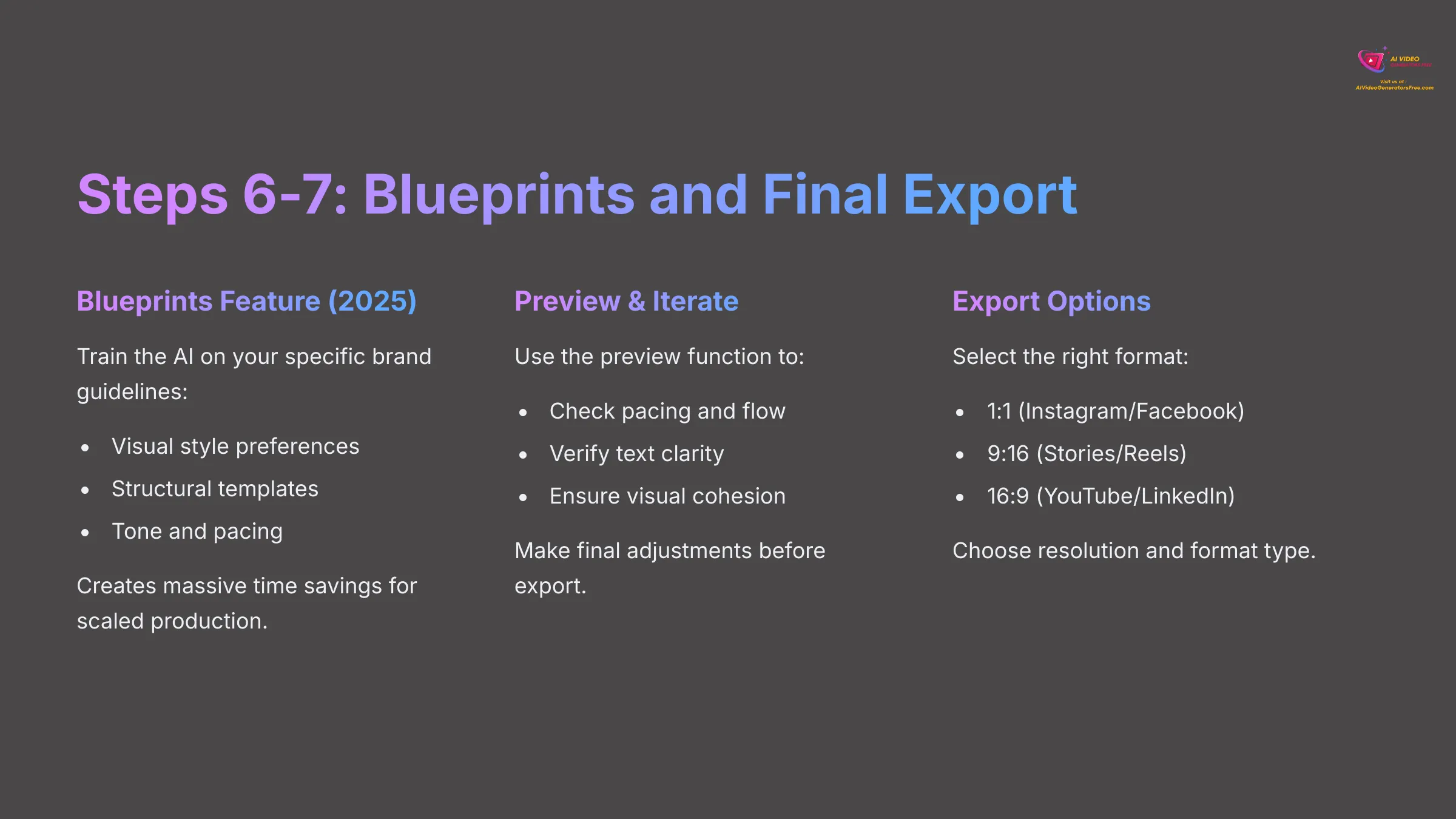

Before you finalize, always use Lumen5's preview function. This allows you to conduct thorough final checks and make any last-minute iterations. Once you feel satisfied, you will choose the right aspect ratio. For example, 1:1 (square) works great for Instagram and Facebook feeds, 9:16 (vertical) proves perfect for Stories and Reels, and 16:9 (landscape) suits YouTube and LinkedIn. You will also select your desired resolution and video format for export.
Essential Resources & Prerequisites for Lumen5 Success
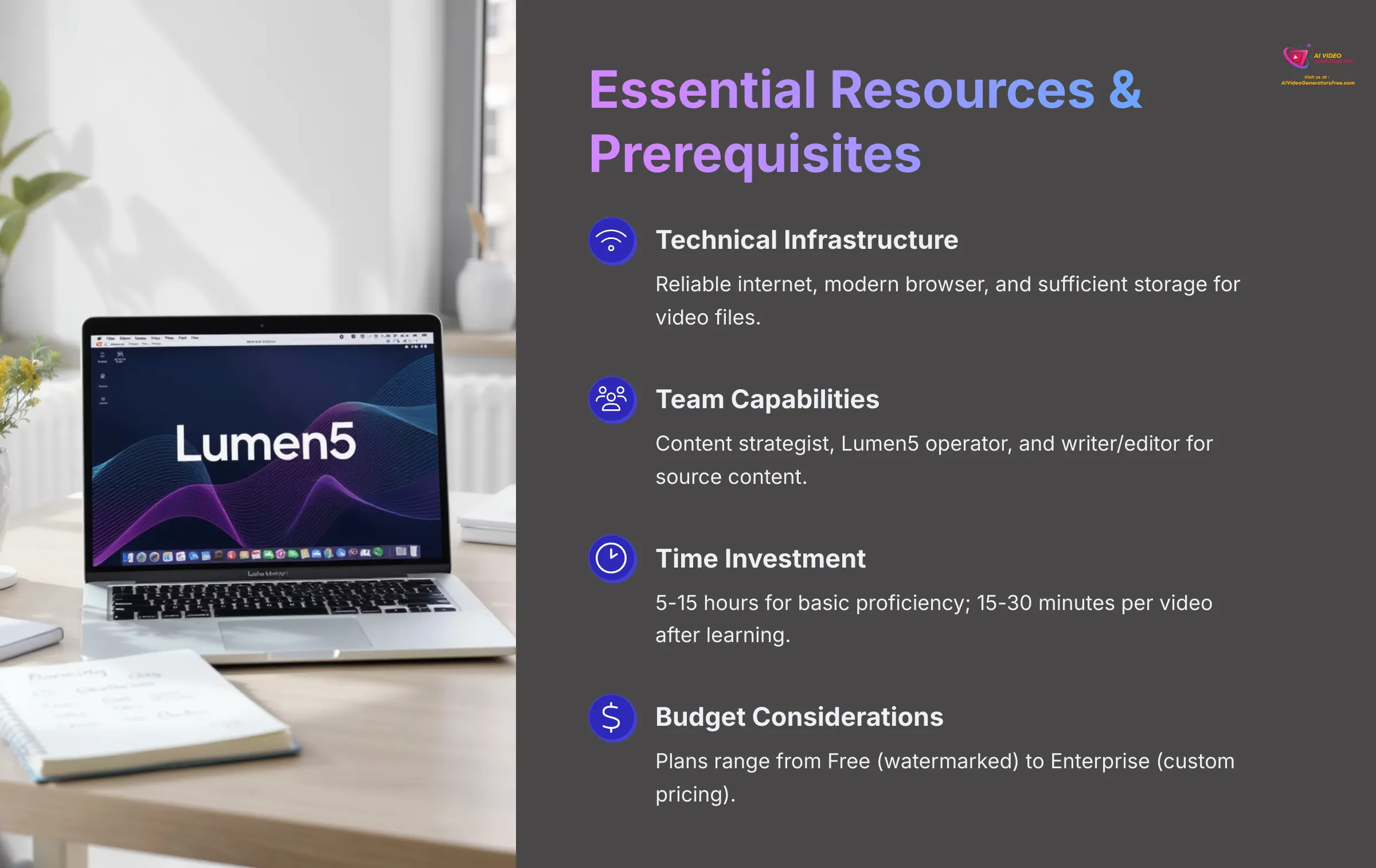

To make your Lumen5 journey smooth and successful, let's outline the necessary resources and prerequisites. These cover technical aspects, team skills, time, and budget.
Technical Infrastructure & Tools
- Lumen5 Access: You'll need a reliable internet connection and a modern web browser, as Lumen5 operates cloud-based.
- Storage: Ensure you have sufficient cloud or local storage for your exported video files.
- Source Content: You need digital access to your articles, blog posts, or other text content.
Team Capabilities & Skillsets
- Content Strategist/Marketer: This person guides content selection and ensures videos align with your overall strategy.
- Lumen5 Operator/Content Creator: This represents the primary user who creates videos. Basic design sense proves helpful, but no prior video editing skills are needed.
- Writer/Editor (Source Content): Someone to ensure your source articles are optimized for video—meaning they are clear and concise.
- Training: Basic proficiency in Lumen5 takes about 5-15 hours. For advanced features and setting up “Blueprints,” expect around 20-40 hours.
Time Investment Expectations
- Learning Curve: It proves impressively low. Most users get comfortable with basic video creation in a few hours to a day.
- Per-Video Production (Post-Learning):
- For simple videos, you're looking at 15-30 minutes.
- If you're doing complex customizations or significant media changes, it might take 1-2 hours.
- “Blueprint” Initial Setup: This can take a few hours to a few days, depending on how complex your branding requirements are.
Budget Considerations & Lumen5 Pricing (2025)
- Lumen5 Subscription Tiers: Lumen5 generally offers several tiers.
- Free Plan: Usually comes with watermarked videos and limited features.
- Basic Plan (~$19/mo in 2025): Typically removes watermarks.
- Starter Plan (~$59/mo in 2025): Offers more features for individual creators.
- Professional Plan (~$149/mo in 2025): Geared towards businesses, with more stock media and higher resolutions.
- Enterprise Plan (Custom Pricing): For large teams, offering “Blueprint” customization and dedicated support.
- Please note: These prices are indicative for 2025. I always advise checking the official Lumen5 website for the most current pricing.
- Additional Costs: Lumen5 has an extensive stock library. However, if you need very specific premium external stock media, that could represent an additional cost.
Workflow Integration: Embedding Lumen5 in Your Content Ecosystem
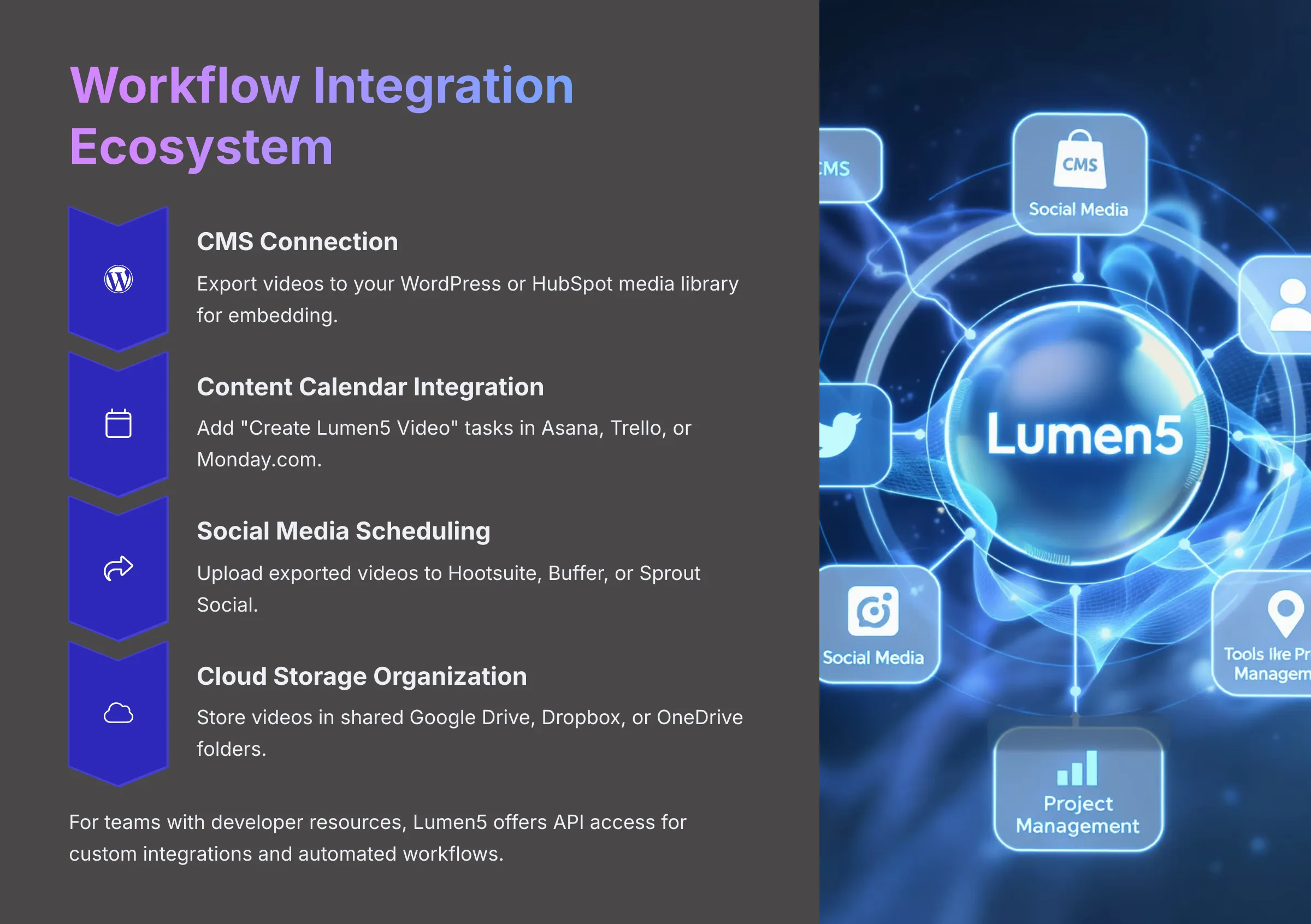

Lumen5 isn't just a standalone tool; it can become a powerful part of your larger content operation. Integrating it properly resembles adding a high-speed automated lane to your content highway, significantly reducing production bottlenecks and maximizing content ROI. Let's examine how it fits.
Connection with Content Management Systems (CMS)
Lumen5 works well with popular CMS platforms like WordPress or HubSpot. Typically, you will export your finished video from Lumen5 and then manually upload it to your CMS media library. From there, you can embed it into your blog posts or web pages. The workflow remains straightforward: export video, upload to CMS, then embed.
Pairing with Social Media Scheduling Tools
Tools like Hootsuite, Buffer, or Sprout Social are commonly used with Lumen5. You export your videos from Lumen5 and then upload them into these scheduling tools. This allows you to plan your video distribution across multiple social media platforms efficiently.
Incorporating into Content Calendar & Project Management
Platforms like Asana, Trello, or Monday.com can help you manage your Lumen5 video production. You can simply add “Create Lumen5 Video” as a task in your content calendars and project boards. This means revising your content calendar to include video versions of articles as a standard part of your repurposing strategy.
Utilizing Cloud Storage for Team Access & Archiving
Using cloud storage services like Google Drive, Dropbox, or OneDrive proves a smart move. You can store your exported Lumen5 videos in shared cloud folders. This facilitates team review, provides easy access for anyone who needs the assets, and ensures long-term archiving of your video content.
API and Advanced Integration (for Technical Teams)
For teams with developer resources, Lumen5 does offer API access. This opens the door for more custom integrations. While this guide focuses on non-technical users, it's worth mentioning that a REST API can be used for building automated workflows, which is common in enterprise implementations.
Overcoming Common Lumen5 Implementation Challenges & Proven Solutions
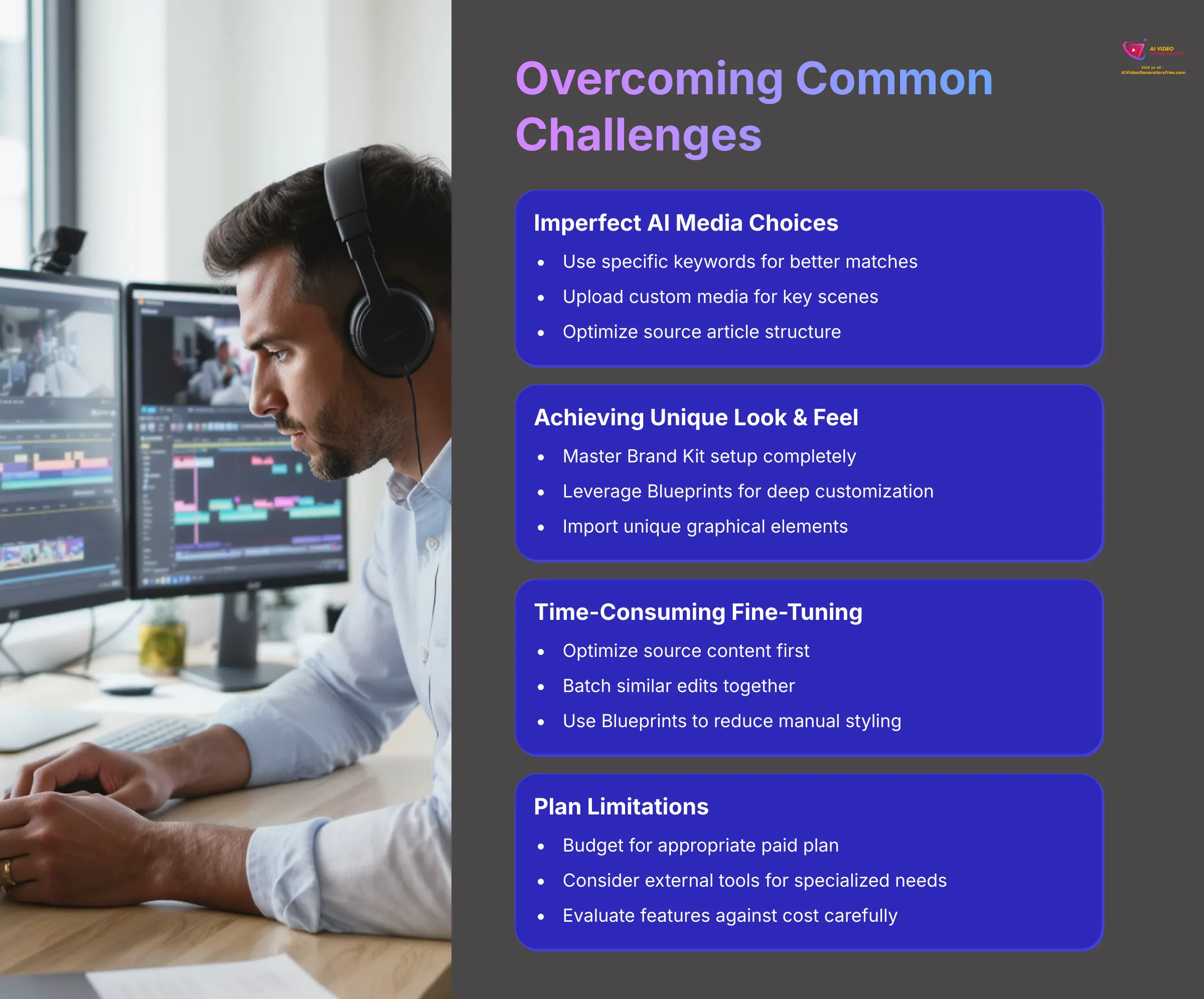

Even with a great tool like Lumen5, you might encounter a few bumps. Here are some common challenges and practical solutions.
Challenge 1: AI Media Choices & Text Summarization Not Always Perfect
Description: Sometimes, the stock media selected by the AI can feel a bit generic or might not perfectly match the nuance of your text. Also, AI-generated text summaries on screen might need a bit of polish.
Solutions:
- Refine Keywords: When searching Lumen5's media library, use more specific keywords to find better matches.
- Upload Custom Media: Don't hesitate to use your own images or video clips for key scenes.
- Manually Edit Text: Take the time to adjust the on-screen text to make it clearer or more impactful.
- Optimize Source Article: Clear, concise source text with good structure helps the AI make better choices from the start.
Challenge 2: Achieving a Unique, Highly Customized Look & Feel
Description: Some users worry that their Lumen5 videos might look too similar to others or that it lacks the advanced customization of traditional video editors.
Solutions:
- Master the Brand Kit: Thoroughly set up your logos, fonts, and custom color palettes for uniqueness.
- Leverage “Blueprints” (2025): This is your key to deep brand customization at scale.
- Focus on Content Quality: Strong messaging and relevant visuals often prove more impactful than complex animations.
- Supplement with Custom Graphics: You can import unique graphical elements if your branding requires them.
Challenge 3: Time Investment for Manual Fine-Tuning
Description: While the AI automates the initial draft, significant manual adjustments can still be time-consuming, especially for perfectionists.
Solutions:
- Optimize Source Content First: Better input means less tweaking.
- Batch Similar Edits: If you're making the same type of adjustment across multiple scenes, do them all at once.
- Leverage “Blueprints”: This feature reduces manual styling for subsequent videos, saving time in the long run.
- Realistic Expectations: Understand Lumen5 is built for rapid repurposing, not for highly artistic or complex edits.
Challenge 4: Free Plan Limitations & Voice Customization Constraints
Description: The free plan usually includes watermarks, which isn't ideal for professional use. Lower-tier paid plans might have limited AI voiceover editing options.
Solutions:
- Budget for Appropriate Paid Plan: For professional use, a paid plan is generally necessary.
- External AI Voice Tools (If Needed): If Lumen5's AI voices don't meet specific requirements, consider generating audio with a specialized tool and importing it.
Measuring Success: Quantifying Lumen5's Impact & ROI
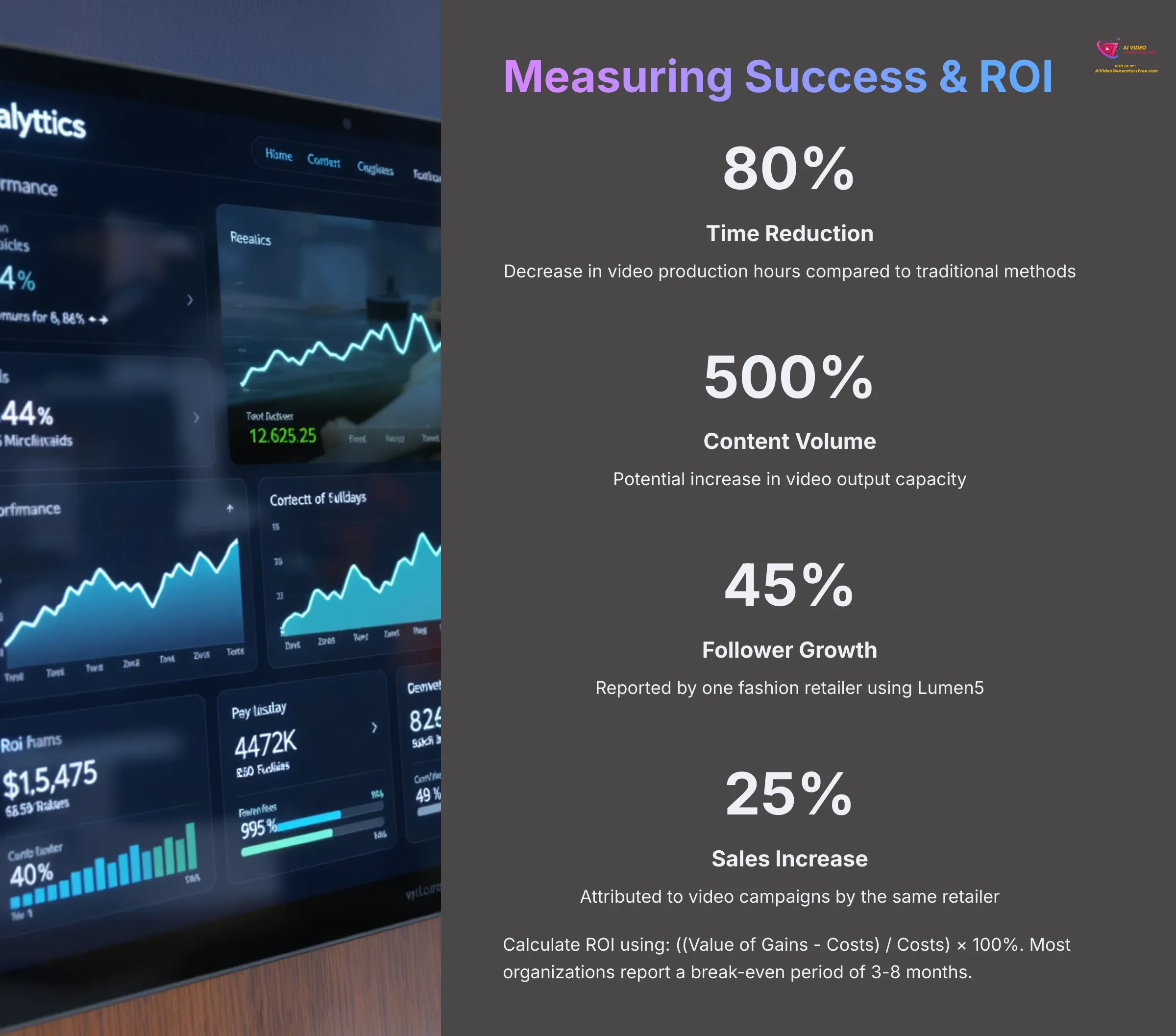

Implementing a tool like Lumen5 is an investment, so it's important to measure its success and calculate the return on that investment (ROI).
Key Performance Indicators (KPIs) for Video Repurposing Success
You'll want to track a mix of efficiency, engagement, and conversion metrics.
- Efficiency Metrics: Video Production Time Reduction (aim for 60-80%), Video Output Volume Increase (expect 300-500%), and Cost Savings.
- Engagement Metrics: Track Views, Watch Time, Likes, Shares, Comments, and Click-Through Rates (CTR).
- Conversion Metrics: Count Leads generated and attribute Sales to your video campaigns.
Calculating Return on Investment (ROI) for Lumen5
The basic ROI formula is: ((Value of Gains - Cost) / Cost) * 100%. Gains include cost savings and the value of increased leads/sales. Costs include the Lumen5 subscription and initial training time.
| Metric | Before Lumen5 (Monthly) | After Lumen5 (Monthly) | Change | Monetary Value |
|---|---|---|---|---|
| Hours to Produce 10 Videos | 40 hours | 5 hours | -35 hours | $X (35hrs * hourly rate) |
| Outsourcing Cost for 10 Videos | $2000 | $0 (Done In-house) | -$2000 | $2000 |
| Leads from Social Video | 5 | 20 | +15 leads | $Y (15 * avg lead value) |
| Total Monthly Savings/Gains | $X + $2000 + $Y | |||
| Lumen5 Pro Subscription | -$149 (example) | |||
| Net Monthly ROI Value | Total Gains – $149 | |||
Tools for Tracking Metrics
To gather this data, use social media platform analytics (Facebook Insights, YouTube Analytics), website analytics (like Google Analytics), and internal time tracking tools.
Industry-Specific Adaptations for Lumen5 Repurposing
Lumen5 is versatile. Its power to transform articles into videos can be adapted across different industries.
Marketing & Content Creation Agencies
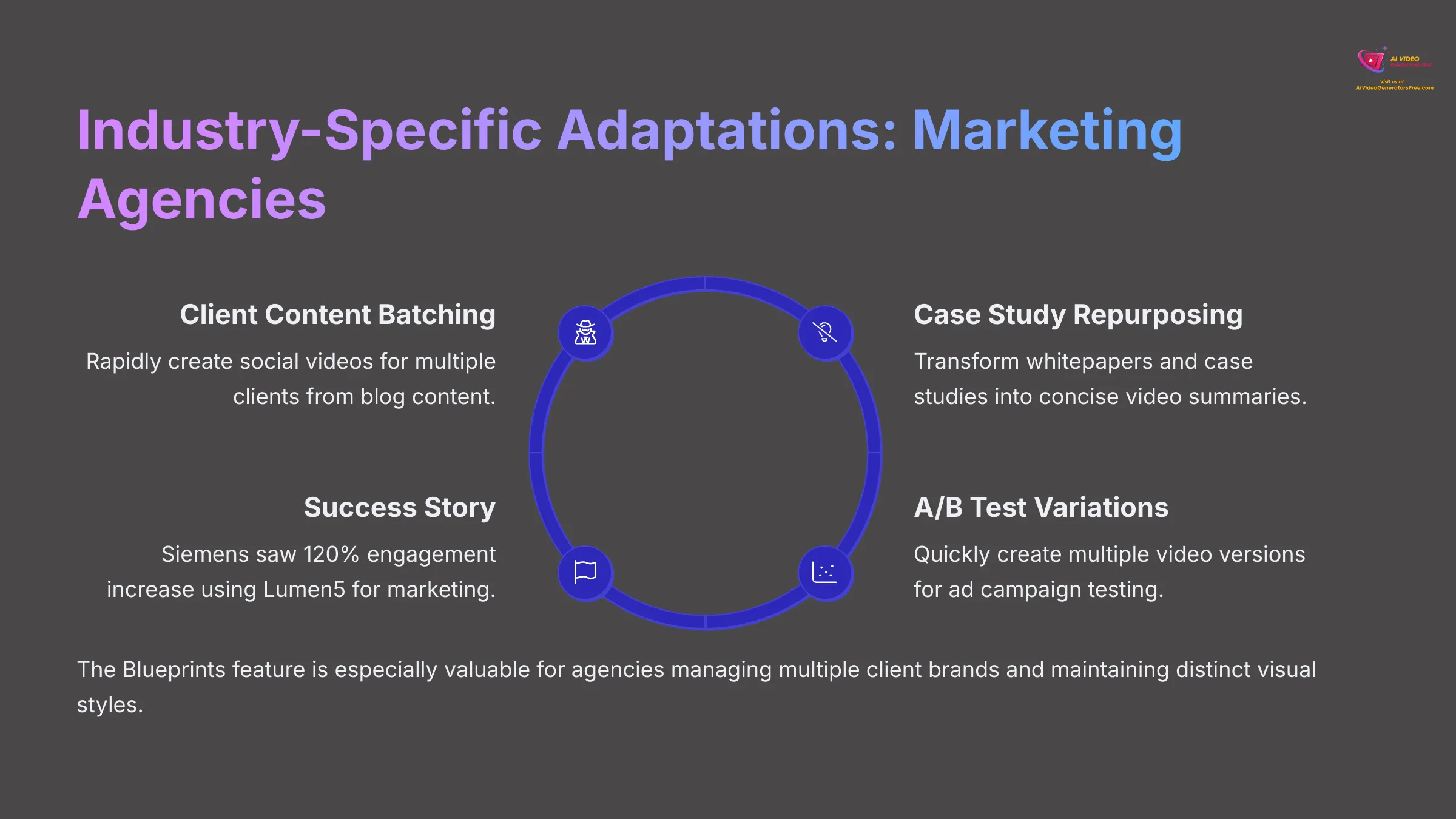

- Use Cases: Rapidly create batches of social videos for multiple clients, repurpose case studies into video summaries, and create A/B test video variations for ad campaigns.
- Lumen5 Focus: The “Blueprints” feature is ideal for maintaining distinct brand styles for each client.
Education & E-Learning Providers
- Use Cases: Convert lecture notes and research summaries into short instructional videos, create engaging micro-lessons, and use AI voiceovers for clear narration.
- Lumen5 Focus: AI storyboarding helps structure educational content, and the media library provides illustrative visuals.
Corporate Communications & Internal Training
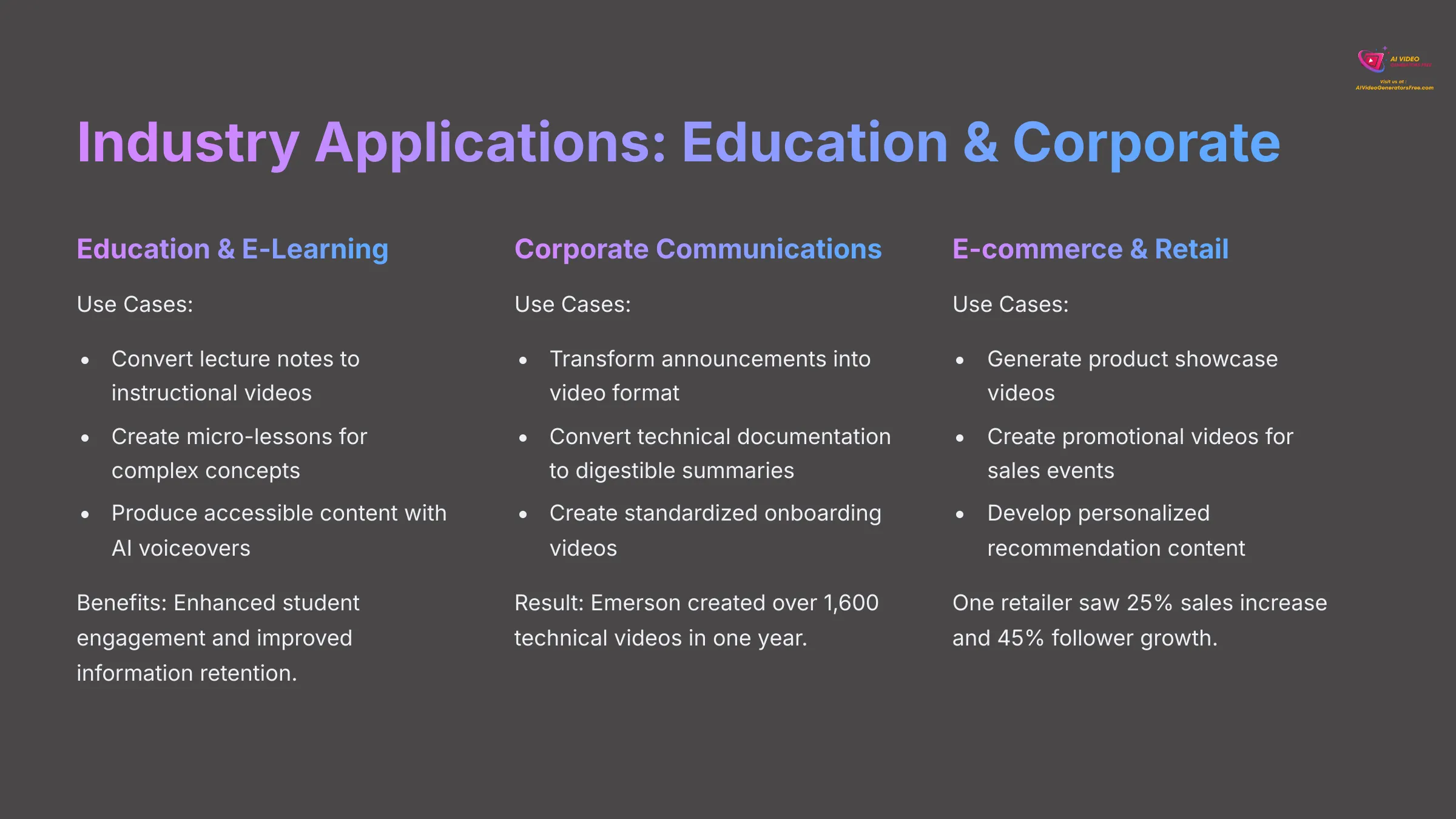

- Use Cases: Transform internal announcements and policy updates into video format, and create consistent onboarding or training videos using AI avatars.
- Lumen5 Focus: The branding kit maintains corporate identity, and its ease of use empowers non-technical teams.
E-commerce & Retail
- Use Cases: Automate the generation of product showcase videos, create promotional videos for sales events, and develop personalized recommendation-style videos.
- Lumen5 Focus: The drag-and-drop editor is great for incorporating product shots, and templates speed up promotional content creation.
Scaling Video Output & Advanced Lumen5 Strategies (2025 Forward)
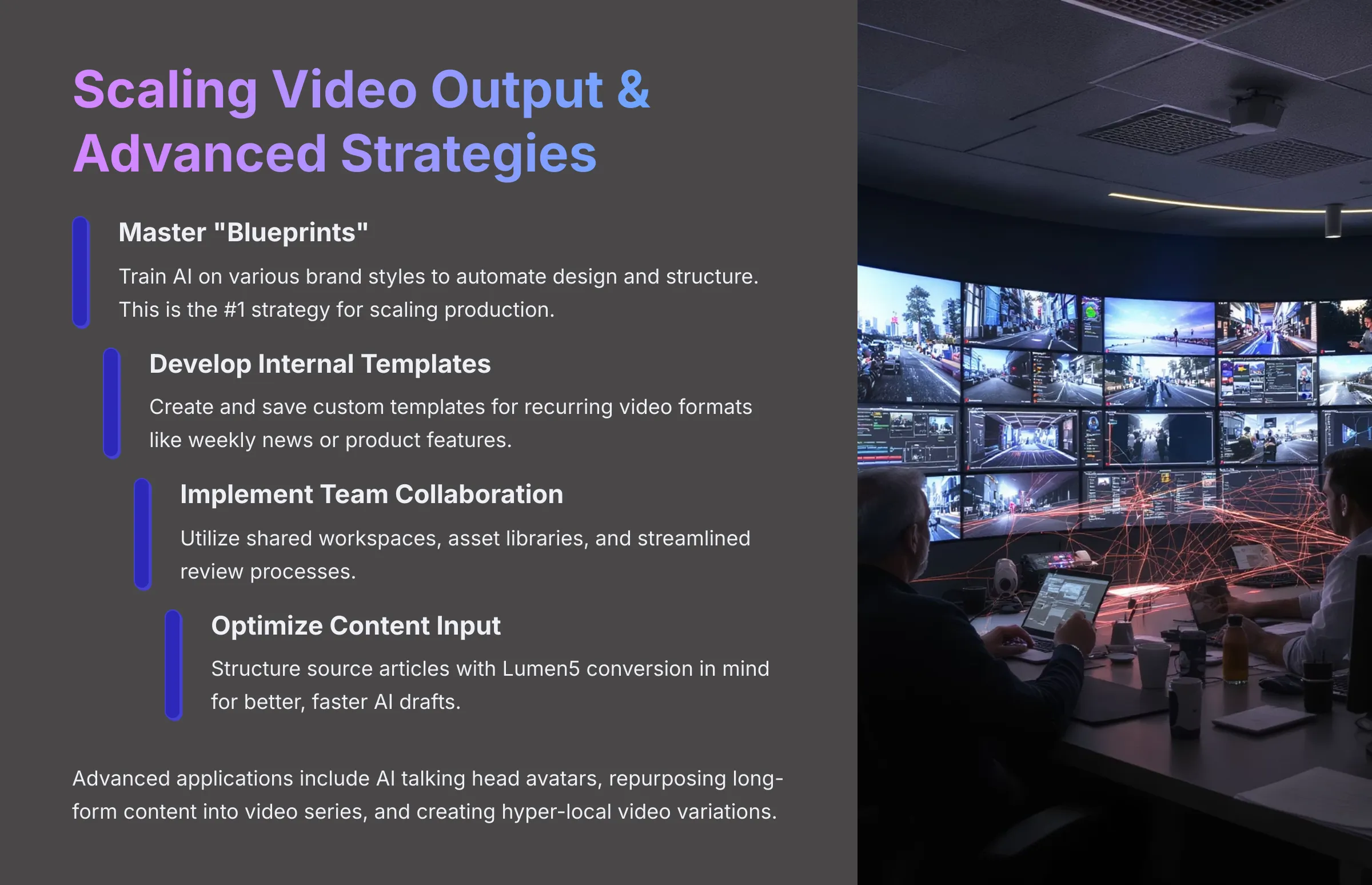

Once you're comfortable with the basics, Lumen5 offers pathways to scale your video production and explore more advanced applications.
Strategies for Scaling Production
- Master “Blueprints”: This is the number one strategy for scaling. Invest time in training the AI on your brand styles.
- Develop Internal Templates: Create and save custom templates for recurring video formats.
- Team Collaboration Features: Use shared workspaces and asset libraries to streamline teamwork.
- Streamline Content Input: Optimize your article writing process with Lumen5 conversion in mind.
Advanced Lumen5 Applications
- AI Talking Head Avatars: Use AI avatars for consistent “talking head” videos for announcements or FAQs without needing to film a person.
- Video Series from Long-Form Content: Break down whitepapers or eBooks into multiple shorter Lumen5 videos to create an engaging series.
- Internal Training Video Library: Rapidly convert internal documentation and SOPs into a library of short video guides.
Frequently Asked Questions (FAQs) on Lumen5 Implementation
Here are answers to common questions about Lumen5, based on practical experience.
Q1: How much customization is really possible with Lumen5 in 2025?
Answer: You can achieve significant customization. The drag-and-drop editor, the brand kit, and especially the “Blueprints” feature offer considerable flexibility. While it's not a full-blown traditional video editor like Adobe Premiere Pro, Lumen5 provides ample control for creating professional-looking social videos. Its strengths are speed and AI assistance, not complex visual effects.
Q2: Is Lumen5 suitable for all types of articles?
Answer: Lumen5 works best for well-structured, informational articles. If your article is highly nuanced, emotionally complex, or a very long narrative piece, it might require more manual tweaking. In some cases, other tools might be a better fit for such content.
Q3: What is the typical learning curve for a new user on Lumen5 in 2025?
Answer: The learning curve is generally low. Most users become proficient in basic article-to-video creation within a few hours to a day, thanks to its intuitive interface and helpful AI assistance.
Q4: Can I use my own video footage, images, and music in Lumen5?
Answer: Yes, absolutely. Lumen5 allows you to upload your own media assets. This means you can use your own video clips, images, and music tracks to complement or even replace items from its extensive stock library.
Q5: How does Lumen5's “Blueprints” feature differ from regular templates?
Answer: “Blueprints” in 2025 are more advanced than standard templates. With Blueprints, you train Lumen5's AI on your specific brand style—this includes tone, visuals, structure, and more. This leads to more automated and deeply consistent branded video generation. Regular templates are pre-set starting points that often require more manual styling.
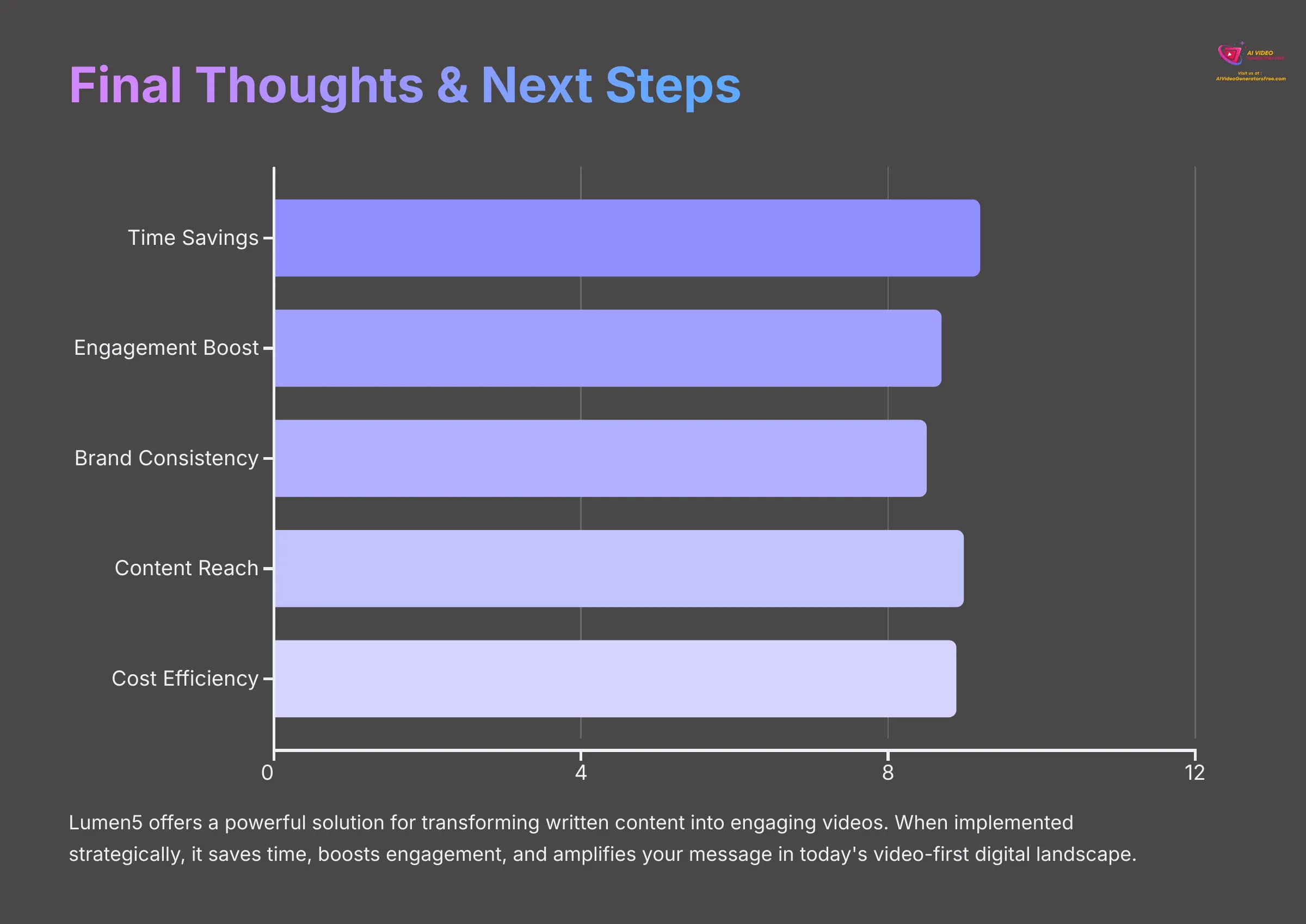

I hope this guide gives you a solid understanding of how to use Lumen5 for your content repurposing. It's a powerful tool that, when implemented strategically, can save you time, boost engagement, and amplify your message. Taking your written content and giving it new life as video is a smart move in today's digital world.
Start Creating with Lumen5 Today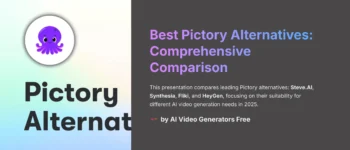
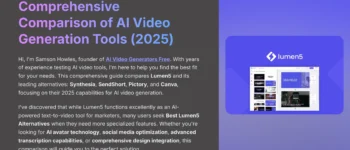
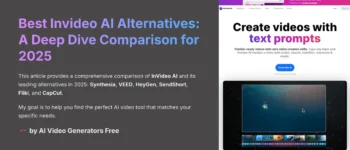
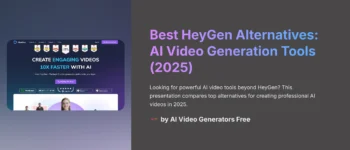

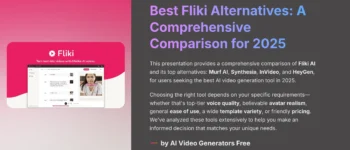



Leave a Reply